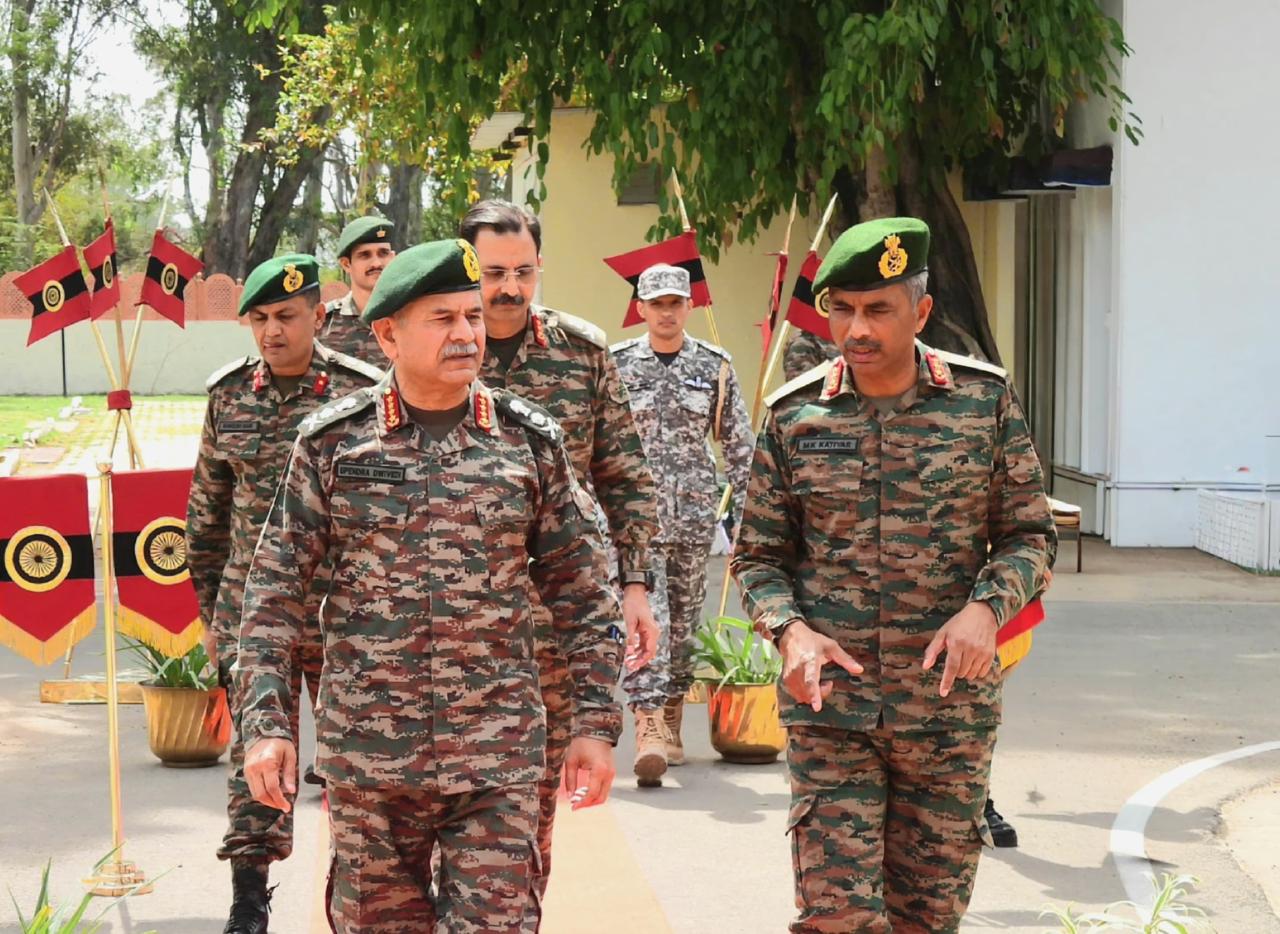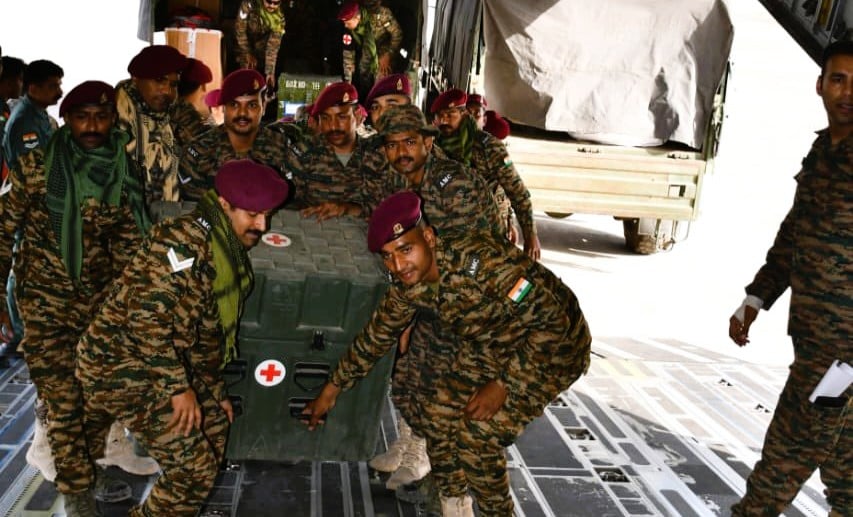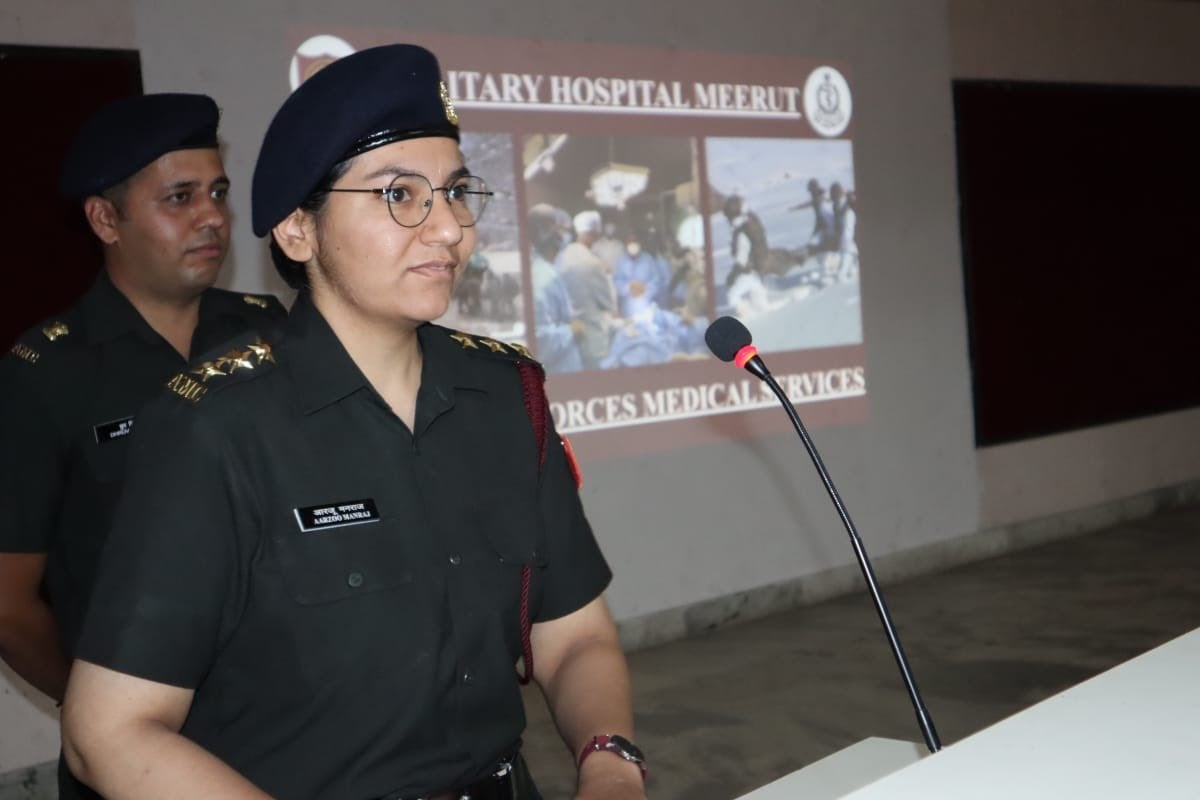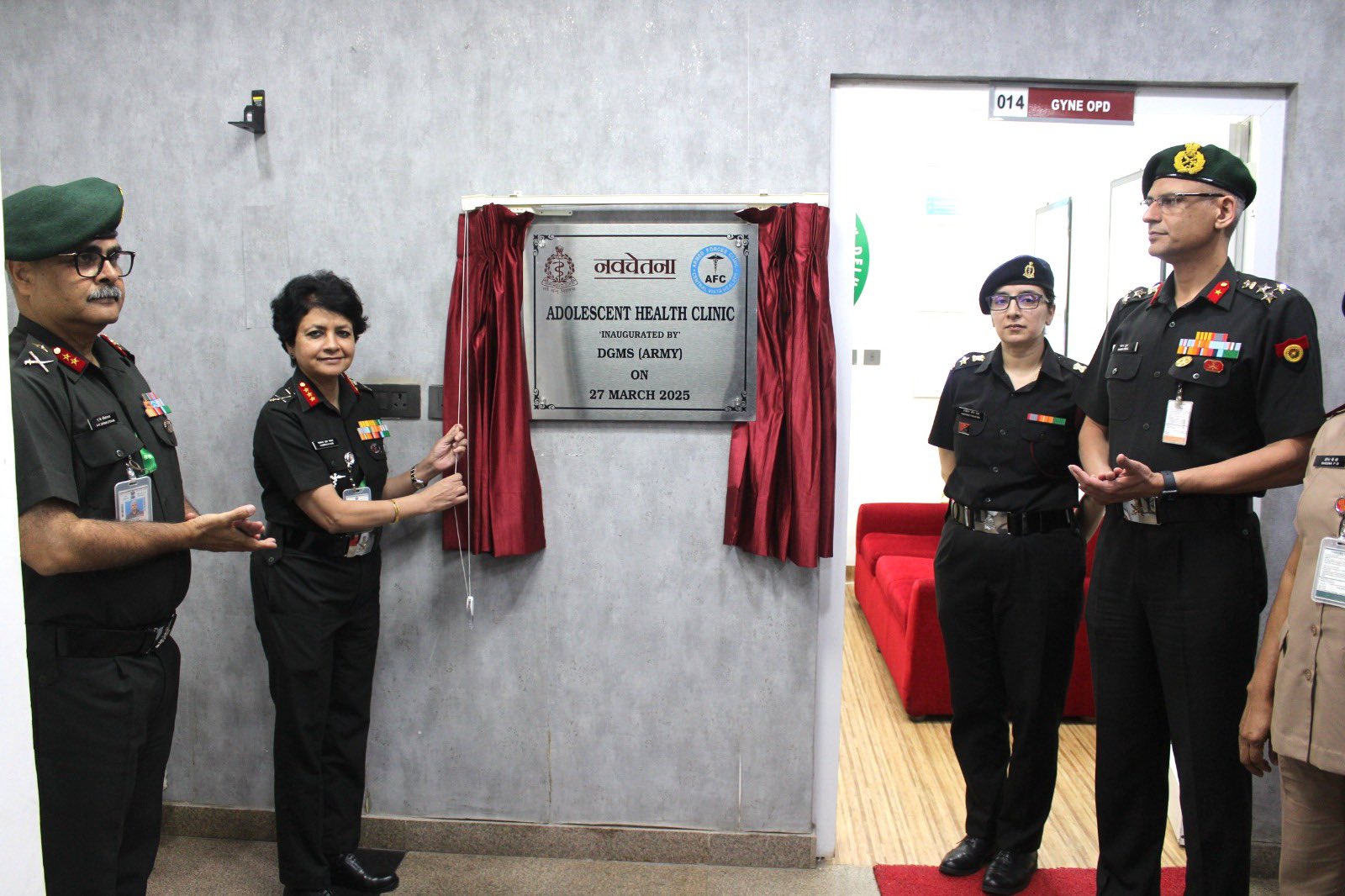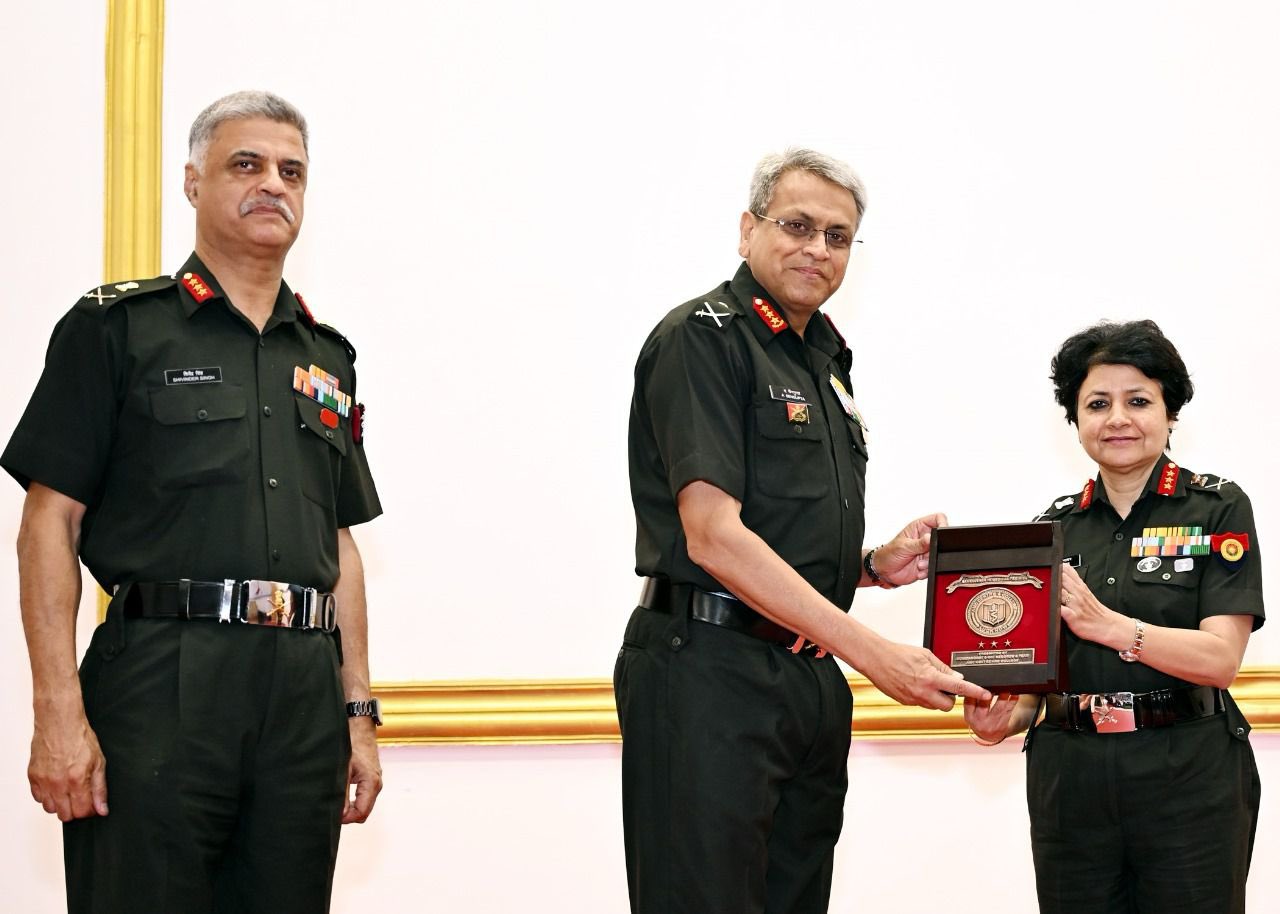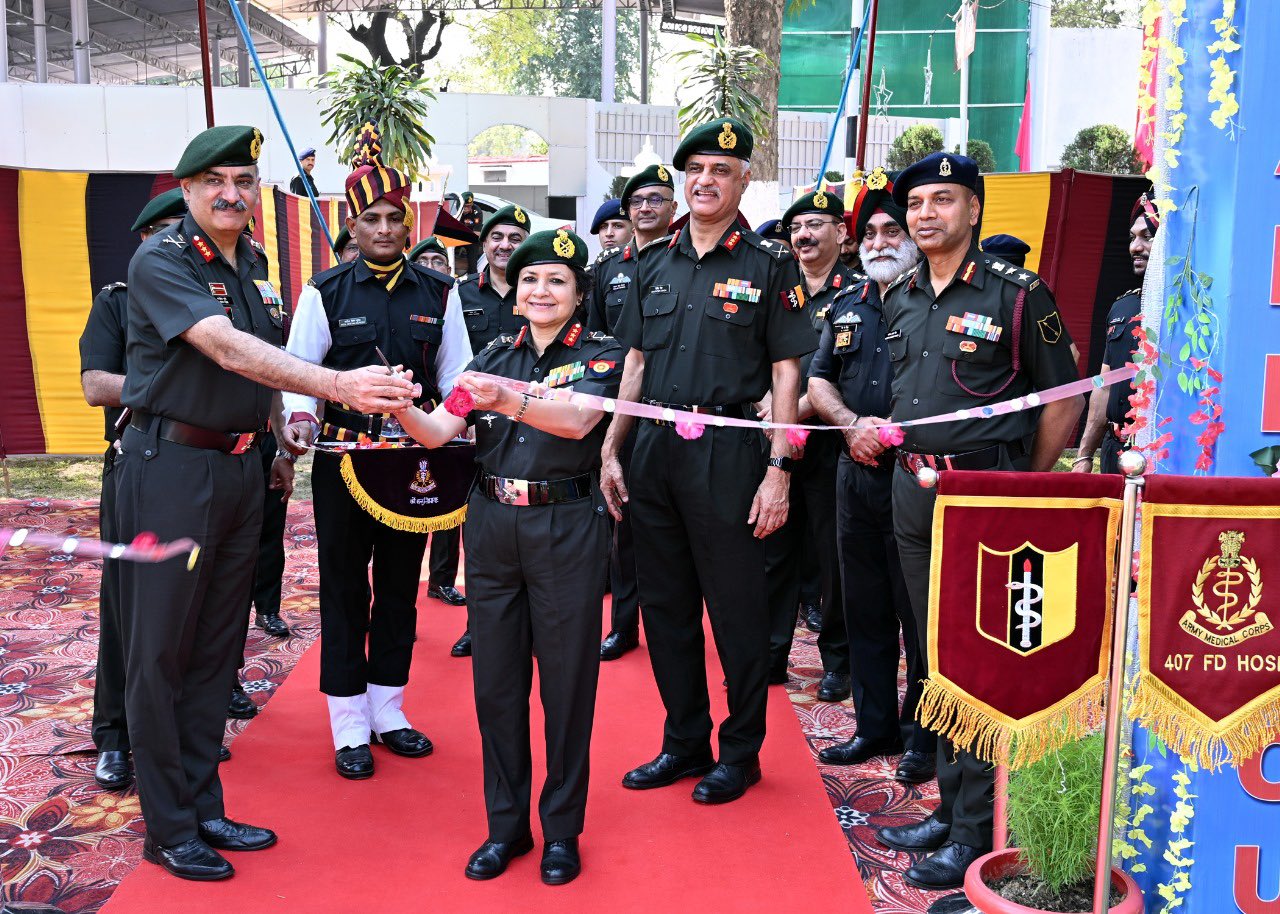COAS General Upendra Dwivedi Reviews Operational Preparedness and Attends Capability Development Conference at Western Command
Chief of the Army Staff (COAS), General Upendra Dwivedi, visited the Western Command from 28 to 29 March 2025, where…
India Launches ‘Operation Brahma’ to Provide Humanitarian Aid to Myanmar After Devastating Earthquake
In response to the devastating earthquake that struck Myanmar on 28 March 2025, the Government of India has launched ‘Operation…
Military Hospital Meerut Conducts ‘Join AFMS Campaign’ at Subharti Medical College, Inspires Future Medical Professionals
Meerut, 28 March 2025: As part of the Armed Forces Medical Services (AFMS) outreach initiative aimed at encouraging medical students…
Lt Gen Sadhna S Nair Inaugurates ‘Navchetna’ Adolescent Health Clinic at Armed Forces Clinic, New Delhi
Lt Gen Sadhna S Nair, Director General Medical Services (DGMS) (Army) and Senior Colonel Commandant, Army Medical Corps (AMC), inaugurated…
57th AMC Biennial Conference Concludes with High Spirits and Renewed Commitment to Excellence
Lucknow, 26 March 2025: The 57th Biennial Conference of the Army Medical Corps (AMC) concluded on a high note today…
57th AMC Biennial Conference Showcases Medical Innovations and Strategic Discussions at AMC Centre & College, Lucknow
The 57th Army Medical Corps (AMC) Biennial Conference commenced at the AMC Centre & College, Lucknow, marking a significant gathering…

